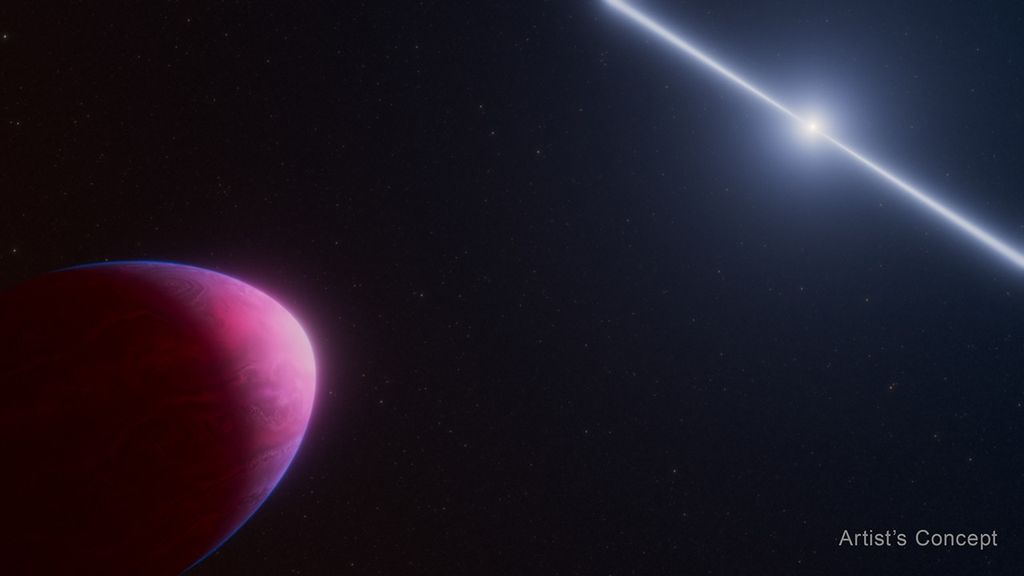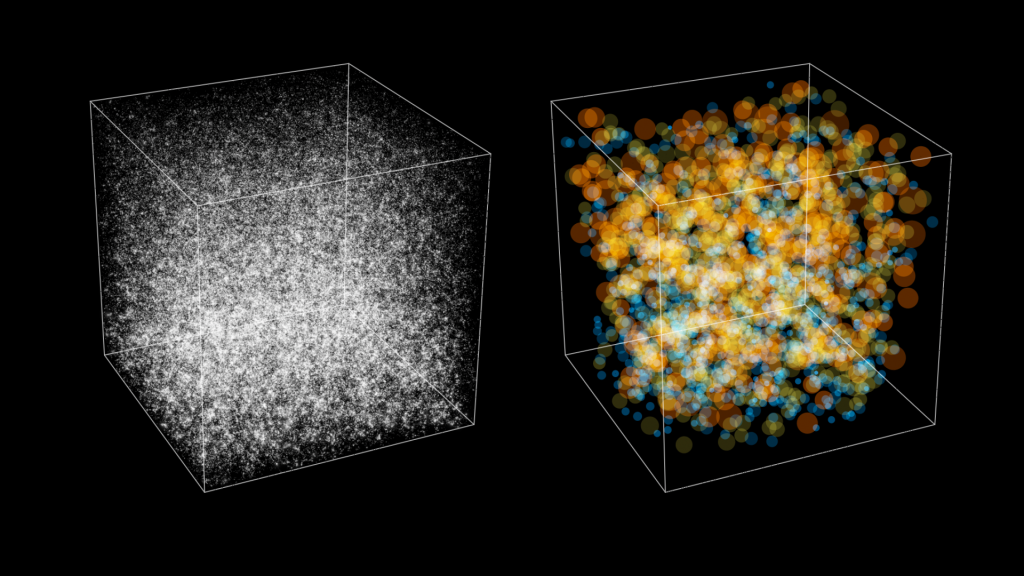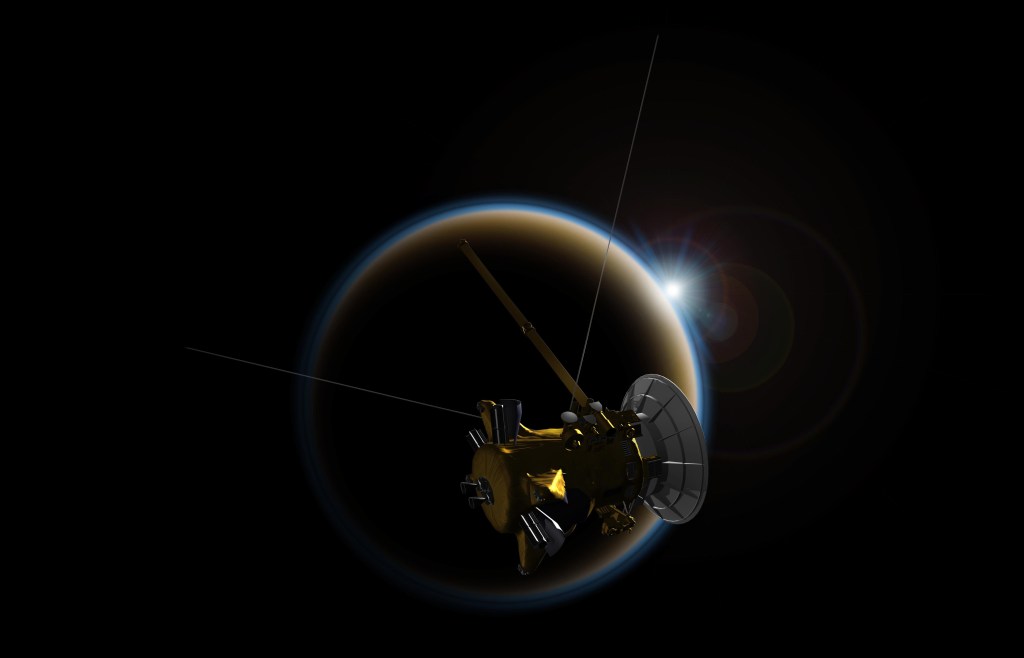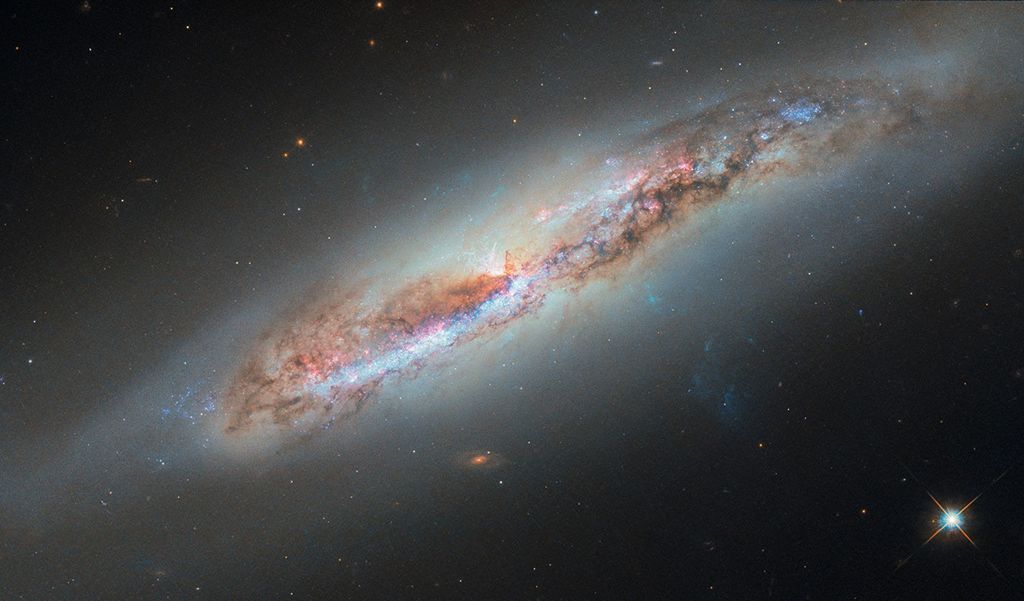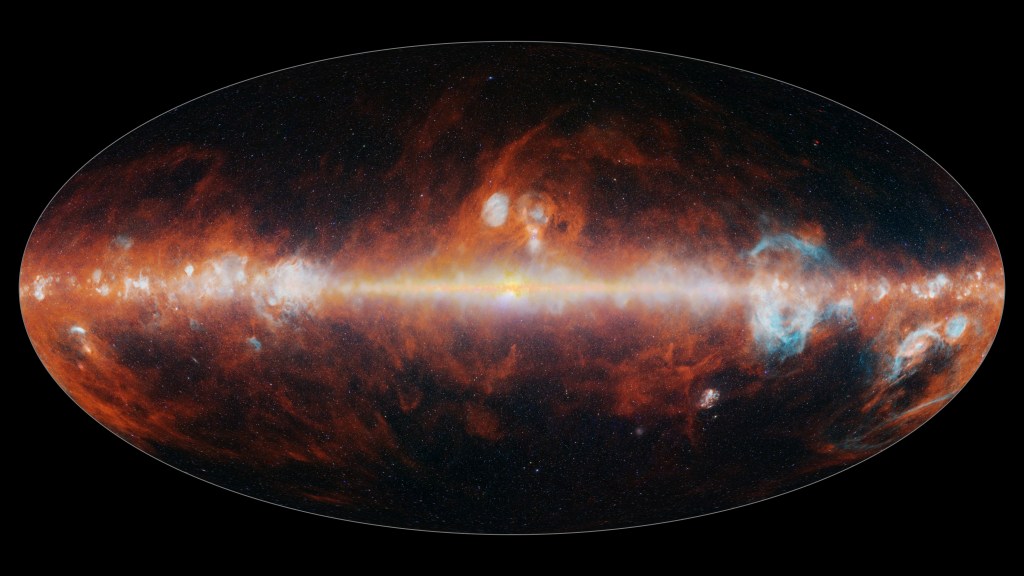1 min read
Kepler-13Ab Artist’s Concept

This illustration shows the seething hot planet Kepler-13Ab that circles very close to its host star, Kepler-13A. Seen in the background is the star's binary companion, Kepler-13B, and the third member of the multiple-star system is the orange dwarf star Kepler-13C.
The alien world, called a "hot Jupiter," is actually six times more massive than Jupiter. Unlike chilly Jupiter, this exoplanet is one of the hottest known of the hot Jupiters, with a dayside temperature of nearly 5,000 degrees Fahrenheit. Another difference between Jupiter and Kepler-13Ab is that the exoplanet is so close to its star that it is tidally locked. One side keeps a permanent face to the star, and the other side is perpetually dark.
On the colder nighttime side, titanium oxide gas changes to titanium dioxide. The planet's immense gravity pulls the titanium dioxide deeper into the atmosphere, where it precipitates as snow. Hubble observations of the planet's atmospheric temperature profile represent the first time astronomers have detected this precipitation process, called a "cold trap," on an exoplanet. Without titanium oxide gas to absorb incoming starlight on the daytime side, the atmospheric temperature grows colder with increasing altitude. Normally, titanium oxide in the atmospheres of hot Jupiters absorbs light and reradiates it as heat, making the atmosphere grow warmer at higher altitudes. The Kepler-13 system is 1,730 light-years from Earth.
The research teams consists of Thomas Beatty, Ming Zhao, Jason Wright, and Ronald Gilliland (Pennsylvania State University, University Park), Nikku Madhusudhan (University of Cambridge, U.K.), Angelos Tsiaras (University College London, U.K.), and Avi Shporer and Heather Knutson (California Institute of Technology, Pasadena, California).
About the Object
- R.A. PositionR.A. PositionRight ascension – analogous to longitude – is one component of an object's position.19 07 53.107
- Dec. PositionDec. PositionDeclination – analogous to latitude – is one component of an object's position.+46 52 05.95
- DistanceDistanceThe physical distance from Earth to the astronomical object. Distances within our solar system are usually measured in Astronomical Units (AU). Distances between stars are usually measured in light-years. Interstellar distances can also be measured in parsecs.The Kepler-13 planetary system is 1,730 light-years from Earth
About the Data
- Data DescriptionData DescriptionProposal: A description of the observations, their scientific justification, and the links to the data available in the science archive.
Science Team: The astronomers who planned the observations and analyzed the data. "PI" refers to the Principal Investigator.Data were provided by HST proposal 13308 (M. Zhao, P.I.). - InstrumentInstrumentThe science instrument used to produce the data.WFC3/IR Grism
- Exposure DatesExposure DatesThe date(s) that the telescope made its observations and the total exposure time.April 2014, October 2014
- FiltersFiltersThe camera filters that were used in the science observations.G141, F130N
- Object NameObject NameA name or catalog number that astronomers use to identify an astronomical object.Kepler-13Ab, Kepler-13 Planetary System
- Object DescriptionObject DescriptionThe type of astronomical object.Extrasolar planet
- Release DateOctober 26, 2017
- Science ReleaseHubble Observes Exoplanet that Snows Sunscreen
- Credit
Related Images & Videos

Comparison of Kepler-13Ab with Five Solar-system Planets (Artist's Illustration)
This is an artist’s impression of the gas giant planet Kepler-13Ab as compared in size to several of our solar system planets. The behemoth exoplanet is six times more massive than Jupiter. Kepler-13Ab is also one of the hottest known planets, with a dayside temperature of...
Share
Details
Claire Andreoli
NASA’s Goddard Space Flight Center
Greenbelt, Maryland
claire.andreoli@nasa.gov


